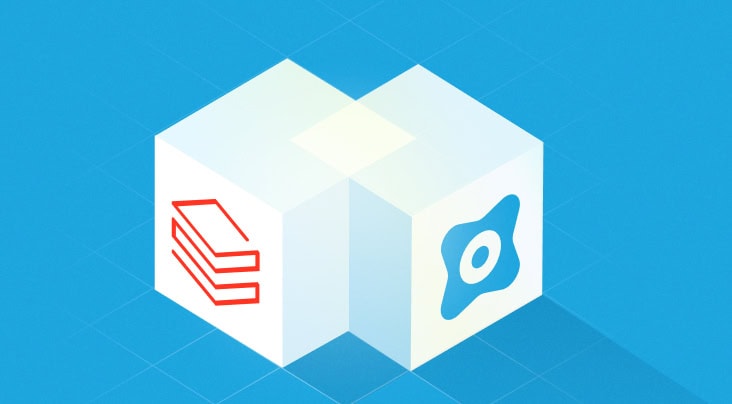Today, organizations are operating in a big bang era of data explosion, where a staggering 402.74 million terabytes of data is created daily. In this hyperscale data-driven environment, businesses that can harness the power of data while managing data risk with a solid security posture will win.
A robust security posture ensures utmost data security and protection against evolving cyber threats, enabling organizations to address concerns such as:
- What’s our current risk profile?
- Do we have adequate defenses to protect against threats?
- Is the security posture aligned with operational and regulatory requirements?
- Do we need to invest in security tools that strengthen its security posture?
These are just some of the broader concerns that a strong security posture helps address. Before diving further, let’s address the critical question: What is a security posture?
What is a Security Posture?
The National Institute of Standards and Technology (NIST) defines security posture as the security status of an enterprise’s networks, information, and systems based on information security resources (e.g., people, hardware, software, policies) and capabilities in place to manage the defense of the enterprise and to react as the situation changes.
In essence, the overall security readiness of an organization’s networks, systems, and processes is reflected in its security posture, reflecting how well the organization can identify, protect, detect, respond to, and recover from security incidents. It also provides a comprehensive overview of potential security vulnerabilities that need immediate resolution.
Strategic Importance of a Strong Security Posture
An organization’s security posture is core to its overall cybersecurity risk. As an organization’s security posture improves, so does its ability to fend off evolving cybersecurity risks. Apart from protecting networks and systems, a strong security posture protects an organization’s crown jewels, that is, sensitive data, proprietary information, upcoming patents, intellectual property, and consumer trust.
When deployed strategically, a strong security posture enables organizations with:
- Risk Mitigation – Reduces exposure to insider and outsider threats without causing operational disruptions and a loss of business.
- Protection against Cyber Attacks – Protects critical systems against inadvertent cyber incidents such as data breaches that could compromise sensitive data.
- Prompt Incident Response – Accelerates data breach response by identifying impacted data to minimize impact and promptly notifying regulatory bodies and affected individuals.
- Regulatory Compliance – Aligns organizations to adopt adequate security measures and amplify their overall security posture, enabling compliance with applicable laws.
- Competitive Advantage – Tactically positions the organization among those that customers can put their trust in, giving a competitive advantage.
Types of Security Posture Organizations Must Assess
An organization’s overall cybersecurity resilience is reflected in its security posture. Within this sphere, organizations utilize various methods and tools to safeguard multiple components of their IT infrastructures. The following are some of the most well-known categories or subfields of security posture:
A. Network Security Posture
Evaluates the organization’s network security policies and controls that protect the network against malicious traffic and rogue access.
B. Data Security Posture
The most critical aspect of security posture is data security posture management, which prioritizes sensitive data protection from unauthorized access, data breaches, etc.
C. Cloud Security Posture
An organization's attack surfaces increase when it uses multi-cloud and hybrid cloud architectures. Cloud security posture reduces the attack surface by safeguarding cloud environments through the automation and simplification of cybersecurity risk assessment and mitigation across hybrid and multi-cloud systems and services.
D. Application Security Posture
Assess the overall security of an organization’s applications and software to protect it from vulnerabilities, exploits, and rogue actors silently operating in the shadows.
E. Identity Security Posture
Identity security posture identifies and remediates anomalies in identity misconfigurations. Given that identity has emerged as the new perimeter and a fundamental component of cybersecurity, it is essential to an organization's entire security posture.
Conducting a Security Posture Assessment
First and foremost, assess your present risk profile. An assessment should be the first step in doing this, as it helps identify vulnerabilities and allocate resources accordingly.
A. Discovery and Inventory
Begin by conducting a comprehensive discovery exercise that identifies the tools and equipment at disposal, including networks, systems, applications, data stores, cloud services, etc.
Identify business-critical processes and flag areas that are vulnerable to exploits, such as outdated software or legacy systems. Risk visibility drives transformation, allowing organizations to establish certain benchmarks and quality checks before business operations can engage in data processing.
B. Risk Assessments and Testing
Conduct a risk assessment to determine how likely it is that adversaries will take advantage of vulnerabilities. Engage in penetration testing activities and personnel checks to determine if those entrusted with handling security deployments and regular upkeep understand and prioritize security. Review existing policies to assess whether they are up to modern-day standards and establish controls accordingly.
C. Continuous Monitoring and Action Plan
No system is foolproof. It requires dedicated effort to address dynamic threats. This is achieved by ongoing monitoring of tools and systems in place and having a well-defined action plan in case of an unforeseen incident. Apart from rapid response, backup systems must be in place to avoid disruptions, lost business revenue and reputational damage.
Strengthen Security Posture with Securiti DSPM
Securiti’s Data Security Posture Management provides holistic insight into the security posture of your multicloud, SaaS, on-prem, data lakes and warehouses and data streaming environments.
With Securiti, organizations can swiftly discover data assets, classify data, detect risk, and automatically remediate misconfigurations, ensuring that your sensitive data stays protected.
Request a demo to see Securiti in action.











































